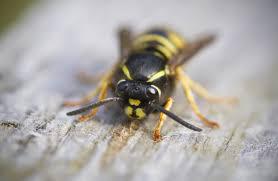Traveler's Guide: Bites and Stings

Every year, millions of people around the world are bitten or stung by insects, which account for a great majority of the species of animals on the planet. Most bites or stings are quite minor, causing little more than redness, itching, stinging or mild swelling. However, some are more severe and can result in an allergic reaction, which will require medical intervention.
The Difference Between a Bite and a Sting
When an insect bites you, it uses its mouth parts, while an insect that stings you uses a stinger on the back of its body. Biting insects like mosquitoes and ticks can infect you with diseases, while stinging insects such as wasps, bees and fire ants do not carry disease but can inject you with venom that can cause skin inflammation and sometimes a severe form of allergic reaction.
Mosquito Bites
Bites from mosquitoes produce small red itchy lumps on your skin, and some may develop into blisters. They may spread infections (malaria, dengue fever, chingkugunya and other diseases) and cause symptoms such as fever, chills, headaches, generalized bodyaches and rashes.
Sandfly Bites
Sand fly bites are painful and may cause small red bumps and blisters which can be incredibly itchy. If you give in to the itch, these bumps and blisters can become infected or cause skin inflammation, or dermatitis.
Tick Bites
Bites are not usually painful, and you may not even realize that you have been bitten.
Bedbug Bites
These develop into itchy red bumps that may be found in straight lines across the skin (neck, arms and legs).
Mite Bites
These cause very itchy red lumps on the skin and may cause scabies.
Spider Bites
Spider bites leave painful small puncture marks on the skin, causing redness and swelling. Some are venomous and may produce the following symptoms: nausea, vomiting and dizziness—and some may develop a severe form of allergic reaction.
Bee and Wasp Stings
Bee stings feel the same as a wasp sting. They are painful with redness and swelling. For bee stings, the sting is often left in the wound.
If You Get Stung/Bitten?
When stung, quickly remove the stinger if it’s still present in your skin. Don't pinch the sting with your fingers or tweezers, because you may spread the venom. Some may develop a severe form of allergic reaction and the following symptoms should be observed: difficulty breathing, swelling of face, eyelids, lips and ears, feeling dizzy, vomiting and diarrhea. You need to seek medical attention if these symptoms develop.
If being bitten by a tick that is still attached to your skin, remove it as soon as possible to reduce the risk of catching a disease. Wash your skin with water and soap afterwards, then apply an antiseptic cream to the skin around the bite. Ticks can cause Lyme disease, and some may develop the typical bull’s eye rash and symptoms such as fever with headaches. You need to seek medical attention if the following symptoms develop: persistent rashes that don’t improve with antihistamines or antiseptic creams, multiple red raised spots on your skin with swelling of the face, difficulty breathing, dizziness, vomiting or diarrhea, systemic symptoms like fever, generalised body aches, chills and bulls eye/target lesion on the skin.
Prevention
Take the following measures to help prevent bites and stings:
- Wear long-sleeved shirts, shoes and pants when going outside in the early morning, late afternoon and evenings. This includes long sleeve pants, long sleeve shirts with a collar and closed in shoes.
- Keep foods and drinks covered when you are outside.
- Apply insect repellant spray and use it according to directions, particularly when applying repellent to children. Focus on areas such as your ankles, neck and scalp.
- Avoid stepping on ant mounds.
- Avoid localities, especially at dawn and dusk. These are known to be frequented with biting midges.
- When indoors, use ceiling and pedestal fans as a deterrent. Midges don’t like air currents and will potentially stay away. Mosquito coils also work reasonably well.
Management
Insects bites produce an inflammatory reaction at the site of the bite, which presents for a few minutes. They cause itchiness with redness and sometimes swelling. The local reaction may subside in a few hours, while others persist and can become a nuisance or may lead to severe allergic reactions.
Management of local reactions includes the use of oral anti-histamines and some mild potency corticosteroid creams. For those who develop some systemic symptoms (fever, bodyaches, headaches, fatigue) and severe form of allergic reactions, immediate doctor’s consultation is recommended.
You are advised to maintain vigilance at all times. Bites or stings may be small, but they can be very dangerous when it comes to disease.
Doctor Christopher M. Suazon, Director, Danang Family Medical Practice
 We use cookies on this website to enhance your user experience
We use cookies on this website to enhance your user experience